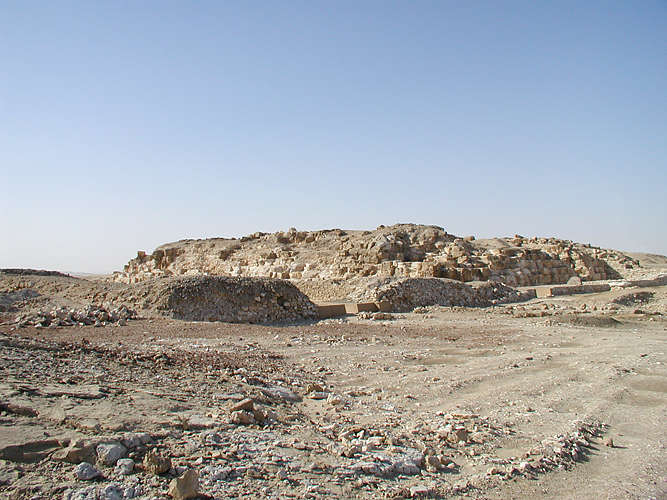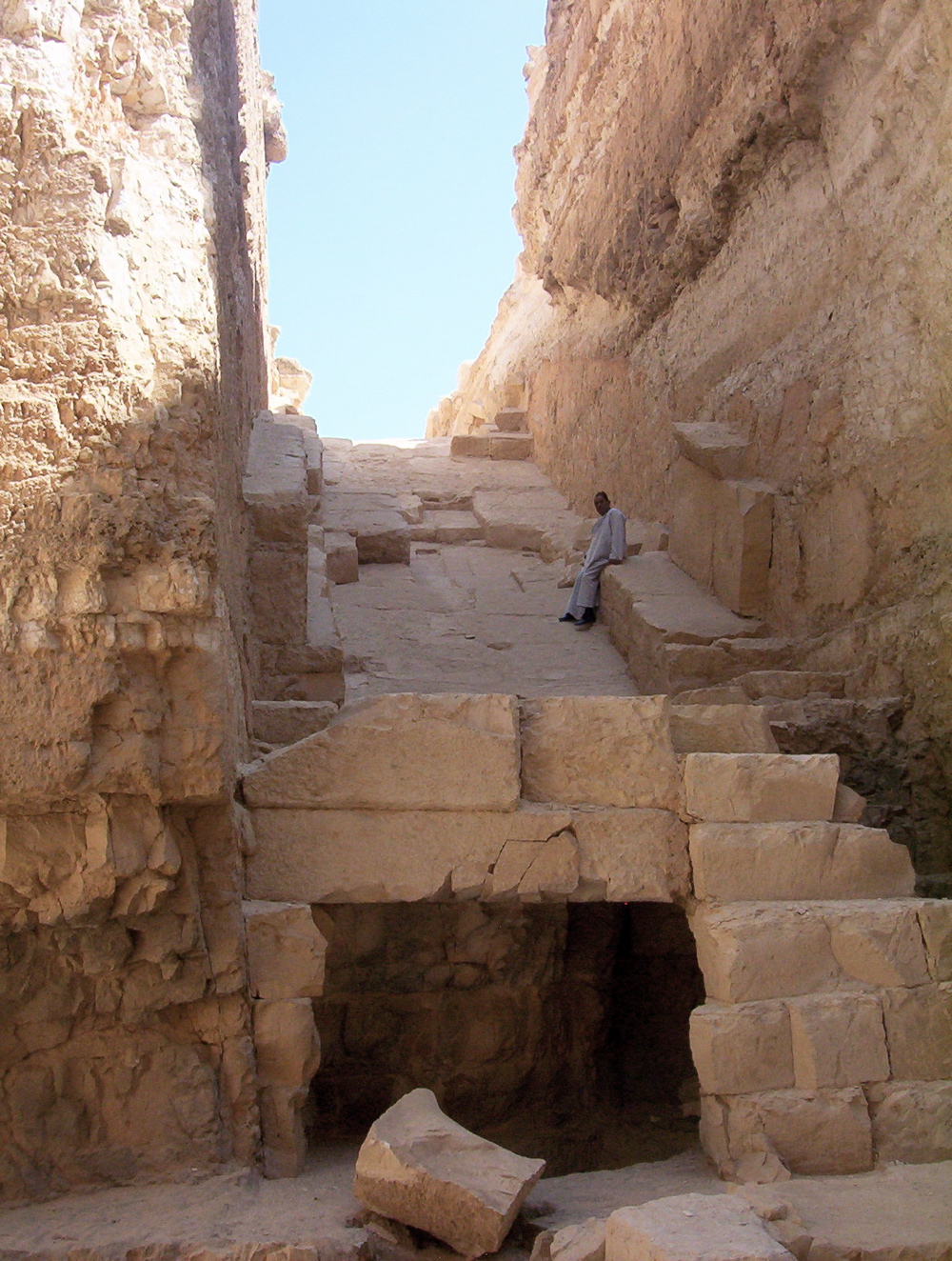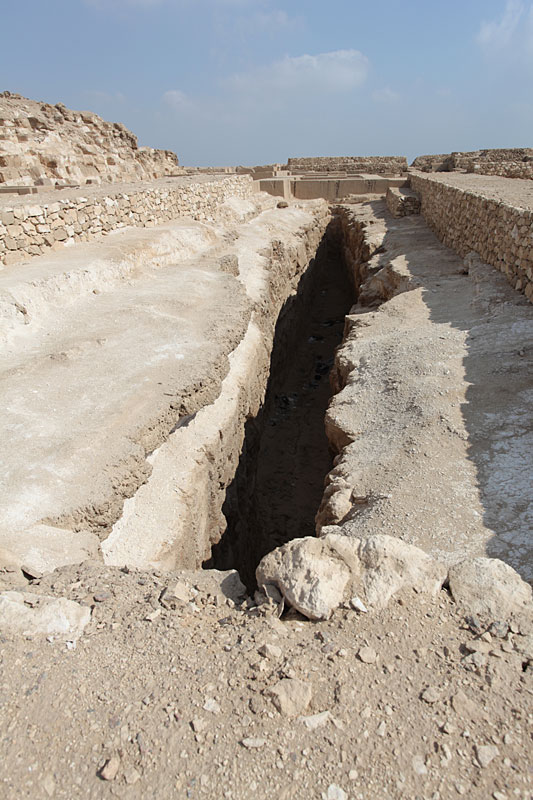Abu Rawash on:
[Wikipedia]
[Google]
[Amazon]

 Abu Rawash (also spelled ''Abu Roach'', Abu Roash; , , , "flesh of sensual pleasures"), north of
Abu Rawash (also spelled ''Abu Roach'', Abu Roash; , , , "flesh of sensual pleasures"), north of
 Its location adjacent to a major crossroads made it an easy source of stone.
Its location adjacent to a major crossroads made it an easy source of stone.
Newsweek's Interactive Graphic on Djedefre's pyramid with Interactive Timeline of the major pyramids of ancient Egypt
Information with interactive map, videos & photos of Abu Roash
a
Talking Pyramids
Ministry of Environment Egyptian Environmental Affairs Agency - Natural Protectorates Description
{{Authority control

 Abu Rawash (also spelled ''Abu Roach'', Abu Roash; , , , "flesh of sensual pleasures"), north of
Abu Rawash (also spelled ''Abu Roach'', Abu Roash; , , , "flesh of sensual pleasures"), north of Giza
Giza (; sometimes spelled ''Gizah, Gizeh, Geeza, Jiza''; , , ' ) is the third-largest city in Egypt by area after Cairo and Alexandria; and fourth-largest city in Africa by population after Kinshasa, Lagos, and Cairo. It is the capital of ...
, is the site of Egypt
Egypt ( , ), officially the Arab Republic of Egypt, is a country spanning the Northeast Africa, northeast corner of Africa and Western Asia, southwest corner of Asia via the Sinai Peninsula. It is bordered by the Mediterranean Sea to northe ...
's most northerly pyramid
A pyramid () is a structure whose visible surfaces are triangular in broad outline and converge toward the top, making the appearance roughly a pyramid in the geometric sense. The base of a pyramid can be of any polygon shape, such as trian ...
, also known as the lost pyramid – the mostly ruined Pyramid of Djedefre
The pyramid of Djedefre is Egypt's northernmost pyramid. Believed to have been built by Djedefre, son and successor to king Khufu, it consists today mostly of ruins located at Abu Rawash in Egypt. Excavation report on the pyramid complex was publ ...
, the son and successor of Khufu
Khufu or Cheops (died 2566 BC) was an ancient Egyptian monarch who was the second pharaoh of the Fourth Dynasty of Egypt, Fourth Dynasty, in the first half of the Old Kingdom of Egypt, Old Kingdom period (26th century BC). Khufu succeeded his ...
. Originally, it was thought that this pyramid had never been completed, but the current archaeological consensus is that not only was it completed, but that it was built about the same size as the Pyramid of Menkaure
The pyramid of Menkaure is the smallest of the three main pyramids of the Giza pyramid complex, located on the Giza Plateau in the southwestern outskirts of Cairo, Egypt. It is thought to have been built to serve as the tomb of the Menkaure , Four ...
– the third largest of the Giza pyramids
The Giza pyramid complex (also called the Giza necropolis) in Egypt is home to the Great Pyramid, the pyramid of Khafre, and the pyramid of Menkaure, along with their associated pyramid complexes and the Great Sphinx. All were built during the ...
. It's believed that the destruction of the pyramid started at the end of the New Kingdom
New or NEW may refer to:
Music
* New, singer of K-pop group The Boyz
* ''New'' (album), by Paul McCartney, 2013
** "New" (Paul McCartney song), 2013
* ''New'' (EP), by Regurgitator, 1995
* "New" (Daya song), 2017
* "New" (No Doubt song), 1 ...
at the latest, and was particularly intense during the Roman and early Christian eras when a Coptic monastery was built in nearby Wadi Karin. It has been proven, moreover, that at the end of the nineteenth century, stone was still being hauled away at the rate of three hundred camel loads a day.
It is the location of the northernmost pyramid in Egypt (known as Lepsius Number One), the pyramid of Djedefre (also known as Radjedef) and around fifty mastaba
A mastaba ( , or ), also mastabah or mastabat) is a type of ancient Egyptian tomb in the form of a flat-roofed, rectangular structure with inward sloping sides, constructed out of mudbricks or limestone. These edifices marked the burial sites ...
s (located one and a half kilometres from Djedefre’s pyramid). The excavation report on the pyramid complex was published in 2011.
Location
 Its location adjacent to a major crossroads made it an easy source of stone.
Its location adjacent to a major crossroads made it an easy source of stone. Quarrying
A quarry is a type of open-pit mine in which dimension stone, rock, construction aggregate, riprap, sand, gravel, or slate is excavated from the ground. The operation of quarries is regulated in some jurisdictions to manage their s ...
, which began in Roman times, has left little apart from a few courses of stone superimposed upon the natural hillock that formed part of the pyramid's core.
Geology of Abu Rawash
The sedimentary succession in Abu Rawash area ranges in age from Late Cretaceous to Quaternary but is punctuated by several unconformity surfaces.Turonian
The Turonian is, in the International Commission on Stratigraphy, ICS' geologic timescale, the second age (geology), age in the Late Cretaceous epoch (geology), Epoch, or a stage (stratigraphy), stage in the Upper Cretaceous series (stratigraphy), ...
to Coniacian
The Coniacian is an age or stage in the geologic timescale. It is a subdivision of the Late Cretaceous Epoch or Upper Cretaceous Series and spans the time between 89.8 ± 1 Ma and 86.3 ± 0.7 Ma (million years ago). The Coniacian is preceded by ...
representing the sedimentary succession of Abu Rawash formation that differentiated into six informal units (members) from younger to older as follows:
*Basal clastic member
*Rudist
Rudists are a group of extinct box-, tube- or ring-shaped marine heterodont bivalves belonging to the order Hippuritida that arose during the Late Jurassic and became so diverse during the Cretaceous that they were major reef-building organis ...
-bearing limestone-marl member
*Limestone member
*Actaeonella-bearing limestone-marl member
*Flint-bearing chalky limestone member
*Plicatula-bearing marl-limestone member.
Sedimentary depositional environment
In geology, depositional environment or sedimentary environment describes the combination of physical, chemical, and biological processes associated with the deposition of a particular type of sediment and, therefore, the rock types that will b ...
of Abu Rawash Formation are characterized by variable conditions and settings ranging from lower mixed to upper intertidal
The intertidal zone or foreshore is the area above water level at low tide and underwater at high tide; in other words, it is the part of the littoral zone within the tidal range. This area can include several types of habitats with various sp ...
flat and subtidal
The neritic zone (or sublittoral zone) is the relatively shallow part of the ocean above the drop-off of the continental shelf, approximately in depth.
From the point of view of marine biology it forms a relatively stable and well-illuminate ...
channel for the clastic facies and calm to agitated open marine inner to middle platform for the carbonate facies
In geology, a facies ( , ; same pronunciation and spelling in the plural) is a body of rock with distinctive characteristics. The characteristics can be any observable attribute of rocks (such as their overall appearance, composition, or con ...
.
Vertical sequence or facies hierarchy display that the facies sequence of the basal clastic member indicates a progradational peritidal sequence. While those of the rudist-bearing member and limestone member represent a cyclic progradation of high energetic/storm facies above an open marine low energetic fore shoal subtidal facies. The facies sequence of the Acteonella-bearing member reflects two facies associations comprising open marine subtidal assemblage and shoal or bank facies. The latter facies represents the bank that the robust thick shelled Durania arnaudi with the coralline sponge heads accreted local mounds in restricted areas El-Hassana dome. The vertical facies hierarchy of the flint-bearing chalky limestone member suggests a renewed shoaling of the depositional accommodation, shifting to inner-platform setting and a progradation of mobile bioclastic shoals
In oceanography, geomorphology, and geoscience, a shoal is a natural submerged ridge, bank, or bar that consists of, or is covered by, sand or other unconsolidated material, and rises from the bed of a body of water close to the surface or ...
or banks. The stacking of the sedimentary facies in the Plicatula-bearing member indicates an accumulation in an open shallow sea (inner platform) with intermittent supply of fine terrigenous clastics and clays. (Hanan.S.M. Badawy, Geology Dept., Faculty of Science, Beni Suef
Beni Suef ( the capital city of the Beni Suef Governorate in Egypt. The city is the location of Beni Suef University. An important agricultural trade centre on the west bank of the Nile River, the city is located 110 km (70 miles) south of ...
, Egypt
Egypt ( , ), officially the Arab Republic of Egypt, is a country spanning the Northeast Africa, northeast corner of Africa and Western Asia, southwest corner of Asia via the Sinai Peninsula. It is bordered by the Mediterranean Sea to northe ...
)
Mastabas
The first burials in the area date to the First Dynasty. There is a large Thinite necropolis at the site and a number of objects bearing the names ofHor-Aha
Hor-Aha (or Aha or Horus Aha; ) is considered the second pharaoh of the First Dynasty of Egypt by some Egyptology, Egyptologists, while others consider him the first one and corresponding to Menes. He lived around the 31st century BC and is thoug ...
and Den
Den may refer to:
* Den (room), a small room in a house
* Maternity den, a lair where an animal gives birth
Media and entertainment
* ''Den'' (album), 2012, by Kreidler
* Den (''Battle Angel Alita''), a character in the ''Battle Angel Alita'' ...
were found in the area. A set of radiocarbon data for the reign of Den from the site sets his accession to 3011–2921 BC (1σ).
Unlike the fourth dynasty mastabas of Giza which sit very close to the pyramids and seem to have been built to a plan in advance, the fourth dynasty necropolis at Abu Rawash (cemetery F) lies some distance from Djedefre’s pyramid and the mastabas seem to have been built to order and laid out in a more haphazard manner. There are also a number of burials dating to the fifth and sixth dynasties and a smaller number dating to the Middle Kingdom.
Most of the mastabas are composed of external walls made up of large blocks layered around a bedrock core with the upper sections filled in with loose masonry. On the east side there is a cult niche to the north and a L-shaped chapel to the south. Some of the southern chapels have brick annexes to extend them. Many of the tombs are anonymous but some bear the names of their owners and some artifacts have been recovered also bearing these names; for example an alabaster offering table dedicated to Hornit.
See also
*List of ancient Egyptian towns and cities
This is a list of known ancient Egyptian towns and cities.
http://www.ucl.ac.uk/. Retrieved on 2016-03-05. T ...
*http://www.ucl.ac.uk/. Retrieved on 2016-03-05. T ...
List of ancient Egyptian sites
This is a list of ancient Egyptian sites, throughout Egypt and Nubia. Sites are listed by their classical name whenever possible, if not by their modern name, and lastly with their ancient name if no other is available.
Nomes
A nome is a s ...
*List of megalithic sites
This is a list of monoliths organized according to the size of the largest block of stone on the site. A monolith is a large stone which has been used to build a structure or monument, either alone or together with other stones. In this list at l ...
References
External links
Newsweek's Interactive Graphic on Djedefre's pyramid with Interactive Timeline of the major pyramids of ancient Egypt
Information with interactive map, videos & photos of Abu Roash
a
Talking Pyramids
Ministry of Environment Egyptian Environmental Affairs Agency - Natural Protectorates Description
{{Authority control